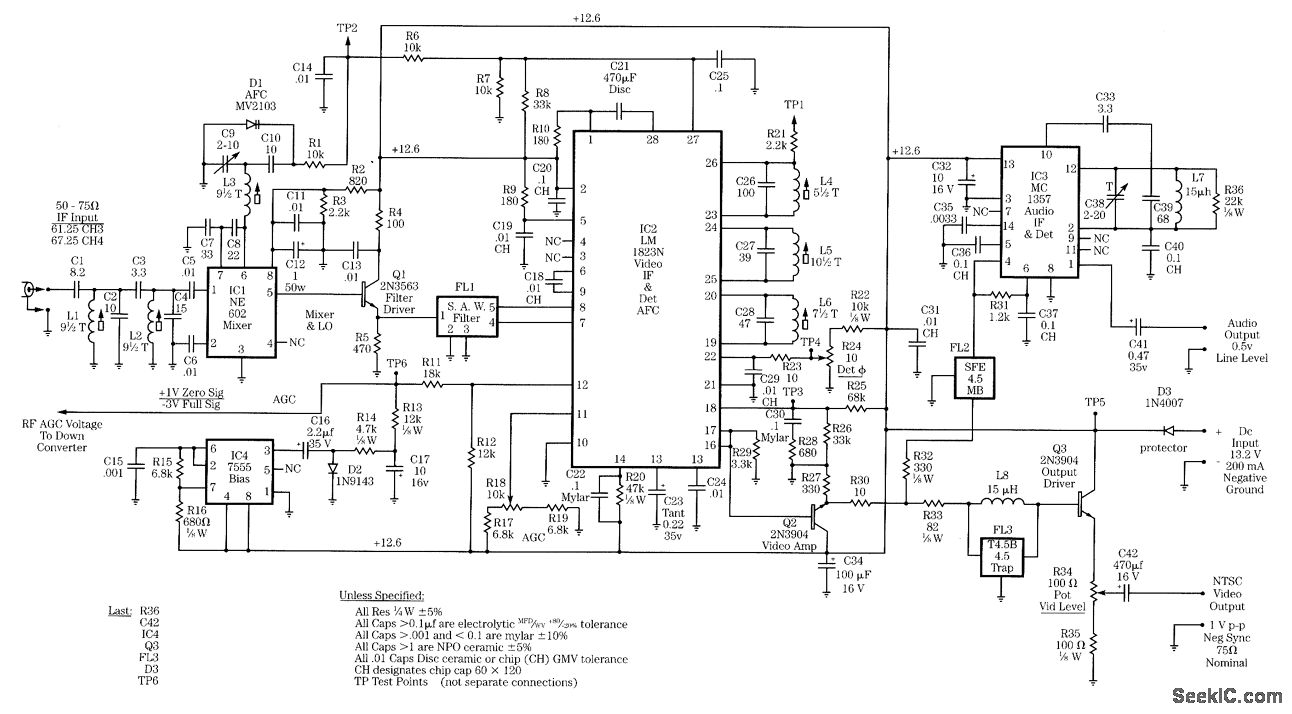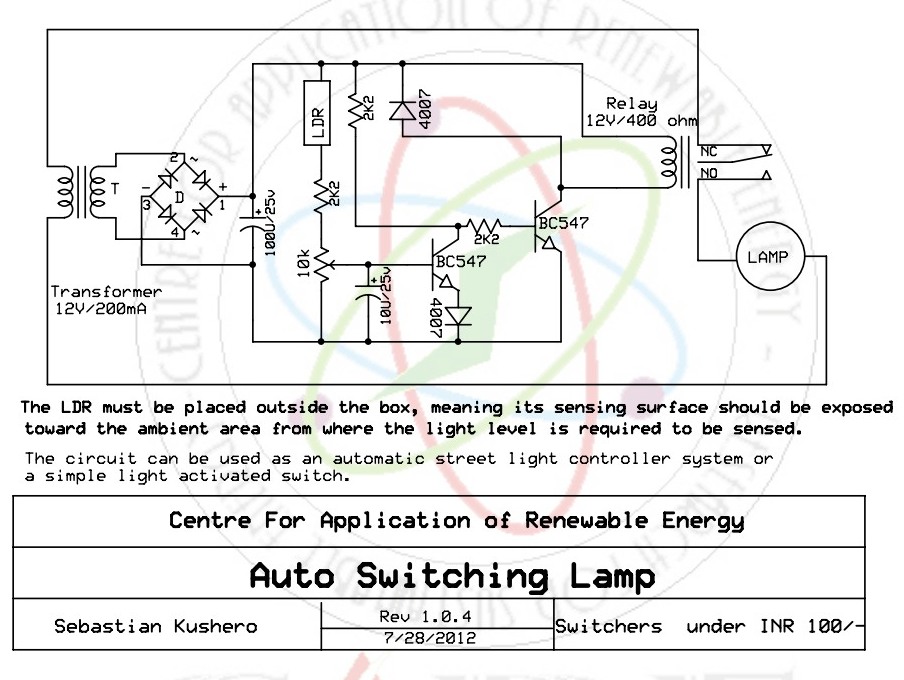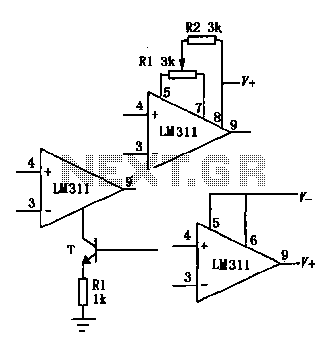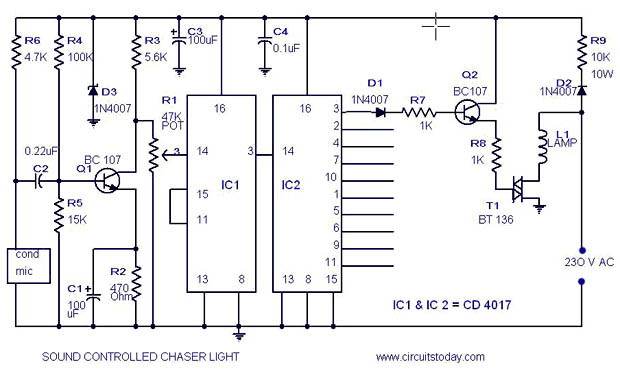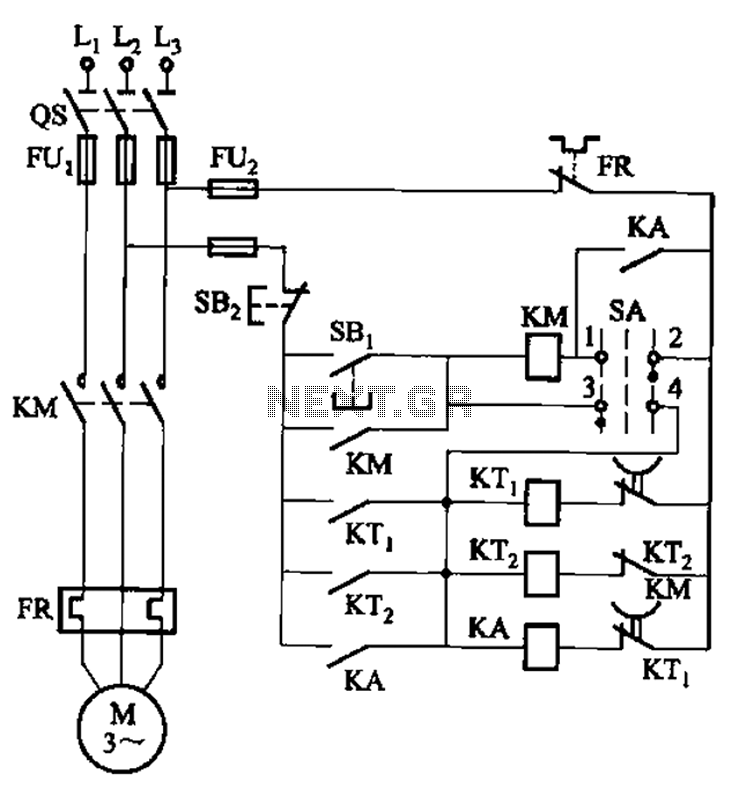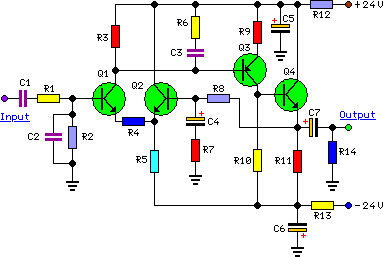
moduler preamplifier circuit diagram
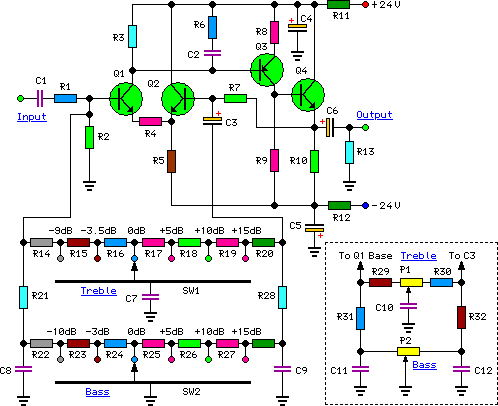
To complement the 60 Watt MOSFET audio amplifier, a high-quality preamplifier design was necessary. A discrete component topology, utilizing +24V and -24V supply rails, was selected, minimizing the transistor count while ensuring low noise, very low distortion, and a high input overload margin. The modules forming this preamplifier can be used in various combinations and can drive different power amplifiers, provided that the subsequent stages present a reasonably high input impedance (i.e., higher than 10 kΩ).
The preamplifier circuit is designed to enhance audio signals before amplification, ensuring fidelity and clarity. The use of discrete components allows for tailored performance characteristics, optimizing the audio path for minimal signal degradation. The dual power supply configuration (+24V and -24V) supports a wide dynamic range, which is essential for high-fidelity audio applications.
The circuit employs a minimal number of transistors to reduce complexity and potential noise sources. Each transistor is selected for its low noise characteristics and linearity, contributing to the overall performance of the preamplifier. The design prioritizes a high input overload margin, allowing the preamplifier to handle unexpected signal peaks without distortion. This is particularly important in audio applications where dynamic range can vary significantly.
Configurable modules within the preamplifier allow for flexibility in system design. Each module can be combined with others to create a customized preamplification stage that meets specific requirements. The output stage is designed to interface effectively with power amplifiers, ensuring that the input impedance remains above 10 kΩ. This high input impedance is crucial for maintaining signal integrity and preventing loading effects that could degrade audio quality.
In summary, this preamplifier design serves as an essential component in high-fidelity audio systems, providing a robust and flexible solution for signal enhancement while maintaining high standards of audio performance.To complement the 60 Watt MosFet Audio Amplifier a High Quality Preamplifier design was necessary. A discrete components topology, using + and - 24V supply rails was chosen, keeping the transistor count to the minimum, but still allowing low noise, very low distortion and high input overload margin. Obviously, the modules forming this preamplifier can be used in different combinations and drive different power amplifiers, provided the following stages present a reasonably high input impedance (i.e.
higher than 10KOhm).. 🔗 External reference
The preamplifier circuit is designed to enhance audio signals before amplification, ensuring fidelity and clarity. The use of discrete components allows for tailored performance characteristics, optimizing the audio path for minimal signal degradation. The dual power supply configuration (+24V and -24V) supports a wide dynamic range, which is essential for high-fidelity audio applications.
The circuit employs a minimal number of transistors to reduce complexity and potential noise sources. Each transistor is selected for its low noise characteristics and linearity, contributing to the overall performance of the preamplifier. The design prioritizes a high input overload margin, allowing the preamplifier to handle unexpected signal peaks without distortion. This is particularly important in audio applications where dynamic range can vary significantly.
Configurable modules within the preamplifier allow for flexibility in system design. Each module can be combined with others to create a customized preamplification stage that meets specific requirements. The output stage is designed to interface effectively with power amplifiers, ensuring that the input impedance remains above 10 kΩ. This high input impedance is crucial for maintaining signal integrity and preventing loading effects that could degrade audio quality.
In summary, this preamplifier design serves as an essential component in high-fidelity audio systems, providing a robust and flexible solution for signal enhancement while maintaining high standards of audio performance.To complement the 60 Watt MosFet Audio Amplifier a High Quality Preamplifier design was necessary. A discrete components topology, using + and - 24V supply rails was chosen, keeping the transistor count to the minimum, but still allowing low noise, very low distortion and high input overload margin. Obviously, the modules forming this preamplifier can be used in different combinations and drive different power amplifiers, provided the following stages present a reasonably high input impedance (i.e.
higher than 10KOhm).. 🔗 External reference
